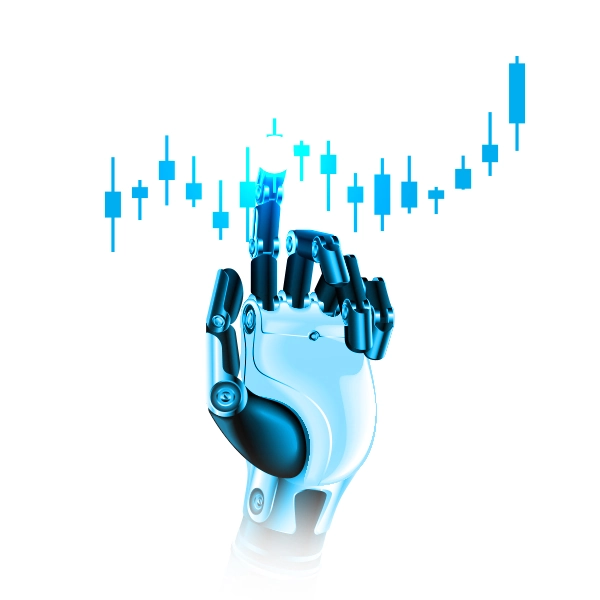Discover the Power of Robot Trading!
Automated trading, also called robot trading or algorithmic trading, refers to the utilization of computer programs to perform trades in financial markets. These computer programs, also known as trading robots or bots, are intended to scrutinize market data, recognize profitable opportunities, and execute trades on the trader’s behalf. In recent years, the popularity of robot trading has increased because of its numerous advantages over traditional trading methods, such as enhanced efficiency and the ability to make trades continuously, 24 hours a day, 7 days a week.
How to choose the Best Robot Trader for You?
Selecting the right robot trader depends on your specific needs and goals as a trader. Popular options like MetaTrader 4, cTrader, and NinjaTrader offer unique features and capabilities, allowing you to customize your trading strategies and access a wide range of markets. Research, compare, and find the perfect fit for your trading journey.

The Benefits of Automated Systems:
Automated systems offer a range of advantages that can enhance trading outcomes:
Reducing Emotional Influence
Automated trading systems effectively minimize the impact of emotions on trading decisions. Emotions like fear or hesitation are eliminated by executing trades based on predefined rules, resulting in more disciplined and consistent trading. This helps traders stick to their plans and avoid overtrading, resulting in more disciplined and consistent trading.
Backtesting
Automated systems enable traders to conduct comprehensive backtesting of trading strategies using historical market data. This allows traders to evaluate the viability of their ideas and refine their approach before risking real money. By applying precise and absolute rules to past data, traders can assess the system’s performance and calculate its expectancy.
Discipline Preservation
Automated trading systems remain disciplined even in uncertain market conditions by following predefined trade rules strictly. This helps to avoid impulsive or emotionally driven decisions, which can lead to unnecessary risks or costly errors. Automated systems also minimize the possibility of human error in trade execution, ensuring that traders stick to their plan and maintain discipline in their trading approach.
Consistency
Following a trading plan is a significant challenge for traders, but automated systems ensure that the plan is executed faithfully without deviations. This consistency is crucial for long-term success because it prevents traders from altering the system’s expectancy based on short-term losses or emotional reactions. By adhering to the predetermined rules, traders maintain a disciplined and systematic approach.
Improved Order Entry Speed
Automated systems capitalize on the speed of computers to execute trades promptly. Orders are generated as soon as the trade criteria are met, allowing traders to take advantage of timely market movements. This speed can make a significant difference in trade outcomes. Automated systems also automatically generate protective stop losses and profit targets, ensuring efficient risk management.
Risks of Automated Systems
Automated trading systems offer numerous advantages, but it is crucial for traders to be aware of certain drawbacks and realities associated with them.
Mechanical Failures
Automated trading may seem easy to set up in theory, but it is not without its flaws in practice. Depending on the trading platform, trade orders may be saved on a computer instead of a server, which could lead to an order not reaching the market if there is an internet connection issue. Additionally, there may be differences between the “theoretical trades” generated by the strategy and the order entry platform that executes them. Traders should expect a learning curve when using automated trading systems and begin with small trade sizes while perfecting their approach.
Monitoring
Although it would be convenient to turn on the computer and let automated trading systems run on their own, they require monitoring. This is because there is a possibility of technology failures such as connectivity issues, power outages, computer crashes, and system quirks. An automated trading system may encounter anomalies that lead to erroneous, missing, or duplicated orders. By actively monitoring the system, traders can quickly identify and resolve these issues.
Over-Optimization
Although not exclusive to automated trading systems, traders who utilize backtesting techniques can create systems that perform poorly in live markets despite appearing excellent on paper. Over-optimization refers to excessive curve-fitting, where a trading plan appears reliable in historical data but fails to perform in real-time trading. Traders sometimes mistakenly believe that a trading plan should yield close to 100% profitable trades or never experience a drawdown to be viable. Consequently, parameters can be manipulated to create a “near perfect” plan that ultimately fails when applied to live market conditions.
Conclusion:
In conclusion, automated trading using robots is an exciting and innovative way to approach trading. By automating tasks and reducing emotional decision-making, trading robots provides significant advantages. However, it is important to keep in mind that no trading strategy is completely reliable, and there are inherent risks in the market. It is crucial to select the appropriate robot trader that is consistent with your particular requirements and objectives. Platforms like MetaTrader 4 offer quick and efficient trade execution, improved risk management, emotionless trading, and the potential to diversify investment portfolios.


